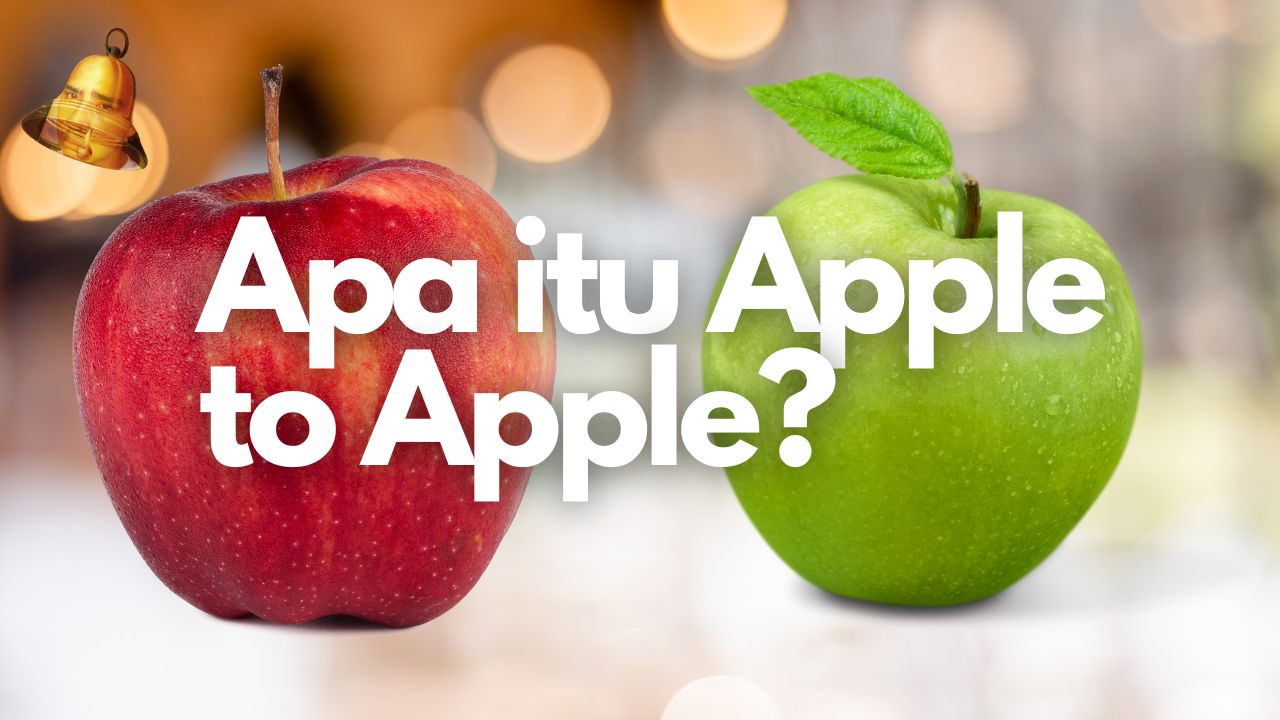Have you ever heard the term apples to apples? This term is often used in various contexts, such as business, education, or everyday life. But what does apples to apples actually mean? How to use this term correctly? This article will explain what apple to apple is and examples of its use.

Apples to apples is a comparison made between two things that are similar, the same, or equivalent. This comparison aims to assess the quality, performance or value of these two things. Apples to apples comparisons are usually carried out using objective, standard and measurable criteria. This comparison must also take into account the relevant context and situation.
Things That Can’t Be Compared Apple to Apple

In general, apples to apples is a term used to state that two things being compared have the same or at least comparable characteristics. For example, we can compare the prices of two laptops that have similar specifications, or the quality of two films of the same genre. However, there are also things that cannot be compared apples to apples because they have different characteristics or are not comparable.
For example, we cannot compare the speed of a car with an airplane, or the beauty of a painting with a song. Things like this are referred to as apples to orange , which is a term used to state that two things being compared have different characteristics or are not comparable. So, to answer this question, we have to pay attention to whether the two things we want to compare have the same or at least comparable characteristics, or not. If yes, then we can use apples to apples. If not, then we have to use apples to orange.

Apples to orange is a term used to refer to an unfair or unreasonable comparison between two things that differ in quality, nature or function. For example, comparing the price of apples with the price of oranges is not appropriate, because they have different sizes, flavors and availability. Comparisons like this are called logical fallacies, because they do not consider the context and relevance of the things being compared.
The apple to orange comparison is often used in various fields, such as politics, economics, science, and so on. The purpose of this comparison can be various, such as to deceive, mislead, provoke, or insinuate. An example of an apples to orange comparison is:
- Saying that someone is smarter than other people because they have a higher IQ test score, even though IQ tests do not reflect all aspects of a person’s intelligence.
- Claiming that a product is better than another product because it has more features, when those features may not be useful or relevant to consumers.
- Stating that a country is more advanced than other countries because it has a higher per capita income, even though per capita income does not include other factors such as social welfare, the environment and culture.
Apples to oranges comparisons can be avoided by using objective, relevant, and appropriate criteria to evaluate the things being compared. In addition, it is also necessary to consider the context and purpose of the comparison. If we find an apples to orange comparison in an argument or information, we must be critical and skeptical of the claims or conclusions made based on the comparison.
Example of Using Apple to Apple
Examples of using the term apples to apples are as follows:
In the business world

Apples to apples comparisons are often used to evaluate products, services, or strategies offered by different companies. For example, if we want to compare the performance of two companies operating in the same field, we can use the apples to apples method. This method is useful for avoiding bias or errors in analysis. Apples to apples can also be used to evaluate products or services offered by competitors. In this way, we can find out the advantages and disadvantages of our own product or service, and find ways to improve its quality. Apple to apple is one way to carry out benchmarking, namely the process of comparing quality or performance standards between one entity and another entity that is considered a reference.
In the world of education

Apple to apple comparisons are often used to measure the abilities, achievements, or potential of different students. For example, a teacher wants to assess the exam results of his students and compare their average scores. The teacher must ensure that the exams given have the same level of difficulty, material and time. If not, then the comparison will not be valid and reliable.
In everyday life

Apples to apples comparisons are often used to express opinions, preferences, or decisions about something different. For example, a friend wants to recommend a film to another friend and compare the film with other films they have watched. The friend should ensure that the films being compared are of the same genre, theme and style. If not, then the comparison will not be relevant and meaningful.
From the examples above, it can be concluded that an apples to apples comparison is a way to express thoughts or judgments about something that is different but similar. This comparison can help us to make more rational, objective and precise decisions. But we also have to be careful in using this term because not everything can be compared in this way. There are some things that are subjective, unique, or cannot be measured using the same criteria.
Therefore, we must always consider the context and situation when using the term apples to apples. We must also respect the differences and diversity that exist among us. We should not impose our views or standards on others without understanding their background and perspective. Thus, we can use the term apples to apples wisely and effectively.


